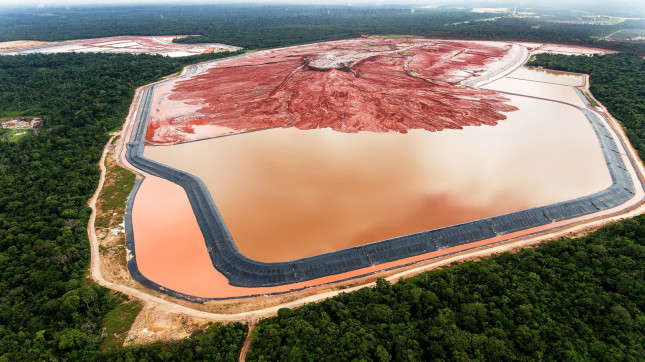-
Environmental Activists Under Assault in Brazil
October 30, 2018 By Adriana Erthal Abdenur
Environmental activists in Brazil are under attack. Last year—the worst year on record—57 of them were assassinated in Brazil, the most dangerous country for environmental activists in the world. The last few years have seen a dramatic uptick in killings of people who take a stand against companies and other actors that commit environmental crimes.
Activists from indigenous communities are particularly at risk. Global Witness estimates that around 25 percent of the 207 activists killed in 2017 came from indigenous communities.
Defending Environmental Rights in Brazil
One activist who works on the frontlines in an indigenous community is Maria do Socorro Costa da Silva. She lives in a quilombo, a settlement founded by people of African origin in the Amazonian state of Pará. In her hometown of Barcarena, a town next to the Tocantins River, Costa da Silva has been fighting environmental damage caused by the largest aluminum processing plant in the Amazon. She and other activists campaign against environmental crimes such as illegally occupying land (including protected areas), corruption, and pollution. Her work is essential, but also risky. As a result of their fight against contamination and pollution, Costa da Silva and others have received threats.
Polluted Water and Air
Companies operating in the Barcarena area have been discharging heavy metals such as lead, cadmium, and aluminum into the river and releasing them into the air. The area has become so contaminated that, in many places, the soil is no longer safe for growing crops. A recent study supported by the Brazilian Ministry of Health, found that the contaminants in the Barcarena region are significantly above normal levels, and that heavy metals have leached through the soil, polluting water wells. Due to the wells’ proximity to the groundwater, the area’s entire water supply may be contaminated.
In the Amazon region, where natural resource exploitation has reached epic levels, many activists are targeted for fighting predatory and illegal extraction of wood; expansion of cattle farms; cultivation of soy, palm oil and eucalyptus; illegal mining; and, in Costa da Silva’s case, irregular land occupation, and pollution.
The impacts of the environmental harm vary. Although contamination by companies like Hydro Alunorte affect the entire population of Barcarena, certain groups suffer more than others. In addition to the residents of the quilombos and the indigenous peoples, children are particularly at risk. Most have stopped playing in the nearby igarapés, the small streams that split off the main rivers in the Amazon, due to the water and soil contamination.
UN-led Initiative to Protect Environmental Defenders
In September 2018, Costa da Silva travelled to Rio de Janeiro to take part in the launch of the UN Environmental Rights Initiative, which aims to protect environmental activists. She spoke of activist friends who have been killed or forced into hiding. Just six months before the launch meeting, another indigenous community leader, Paulo Sérgio Almeida Nascimento, was shot dead after denouncing environmental crimes in his hometown of Barcarena. She has good reason to fear. Of the 57 environmental activists assassinated in Brazil in 2017, 25 died in three mass killings.
The new UN initiative has been framed as a policy aligned with UN Environment’s “Environmental Rights Initiative,” which promotes access to information on environmental rights and seeks to amplify the voices of environmental activists. Its main goal is to protect activists from intimidation, threats, attacks, and assassinations.
A rapid response mechanism is designed to address individual cases and to point to technical and legal solutions for the judiciary and enforcement community, so that they can strengthen the environmental rule of law. At the same time, in order to prevent violence against activists, UN Environment will continue working with judges to develop and implement environmental constitutional provisions to help secure environmental rights.
Brazil’s efforts to protect activists
The Brazilian government is also taking steps to save lives by offering broader, federal-level protection for environmental defenders and communicators. Its program to protect environmental defenders was renamed “Program for Protection of Human Rights Defenders, Social Communicators and Environmentalists” and its budget was expanded. The new, more streamlined program is easier to join, and it avoids removing activists from their home communities once they are threatened. It is a welcome step to end the massacres and unregulated exploitation of environmental resources. Large companies and the new government should now commit to tackling this issue and strengthen the institutions that protect land rights, the indigenous peoples, and human rights defenders. They must ensure that justice is served.
By making specific commitments related to the UN initiative and setting the bar higher to defend and promote environmental rights, all UN member states can help support the UN initiative. In the end, all of these channels for environmental diplomacy will be effective only if the UN and member states are able and willing to turn promises into concrete reality, helping to prevent and address attacks and threats that target activists like Costa da Silva.
Adriana Erthal Abdenur is Coordinator of the Peace & Security Division at Instituto Igarapé.
Sources: Amazonia Real, Climate Diplomacy, Global Witness, Globo, UN Environment Programme
Photo Credit: Bauxite waste in Barcarena, Pará, Brazil. February 2018. Courtesy of Pedrosa Neto/Amazônia Real at Jeso Carneiro.
 A Publication of the Stimson Center.
A Publication of the Stimson Center.



